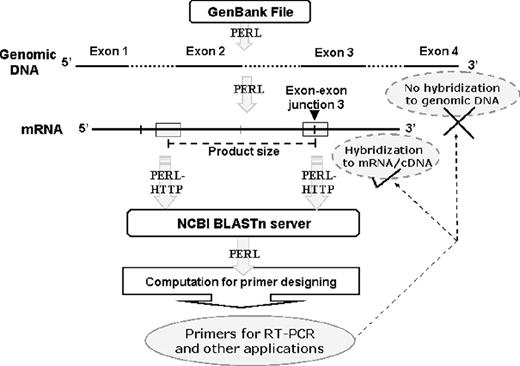See similar questions elsewhere.
Looking into this paper on primer design, they write this:
It is often necessary to choose the primers from the exon—exon junctions (E-E-jns), the regions of mRNA which include nucleotide sequences from the 5’ border of one exon and 3’ border of the neighboring exon. Selecting at least one primer that represents one such E-E-jn of a particular transcript is important for expression profiling of alternatively spliced variants. The E-E-jn specific oligonucleotides could also be used as probes in microarray experiments addressing alternative splicing and the follow up confirmations by reverse transcription—polymerase chain reaction (RT—PCR) (e.g. Johnson et al., 2003). This type of ‘junction primers’ could be used to overcome the problem of genomic DNA in mRNA samples used in RT—PCR reactions.
In other words, a "junction primer" will be able to work off of cDNA (made from mRNA) but not genomic DNA. Thus you can be confident, if your primer works, that you are measuring expressed mRNA.
Presumably you are actually doing qRT-PCR off of mRNA of a eukaryotic organism, not just qPCR off of genomic DNA. That is why you want the exon-exon junctions, as explained above.
For a step by step guide to qRT-PCR primer design, you can see this.
See also their figure from the paper linked above:


